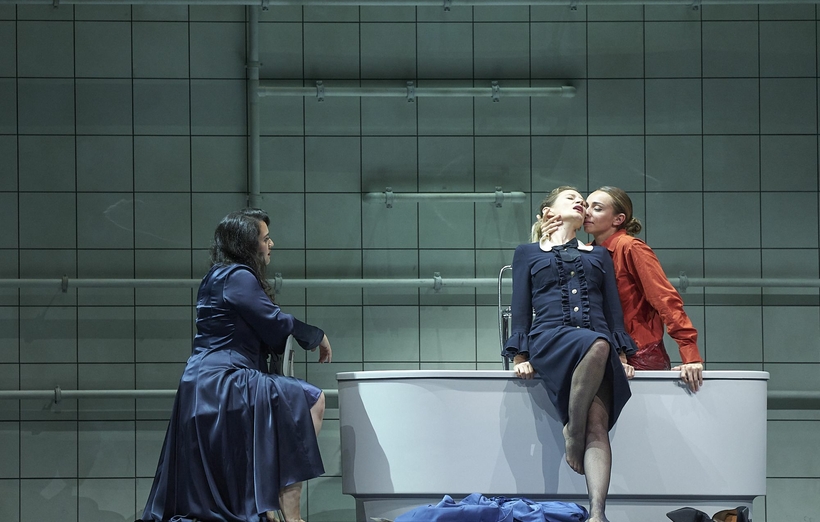There’s nothing reverential in the cult of Mozart as practiced these days at the festival in his native Salzburg. “I’m very well known for my irritating work, and I think I was hired especially for that,” the Austrian director Martin Kušej told Ronald Blum of the Associated Press this summer, à propos his new staging of Le Nozze di Figaro. “Who wants to have the 150th version of a well-made Figaro in Salzburg? I want it to be relevant to today’s audience.… My aim is really to make opera living in our times, questioning questions that we have today.”
Yawn. True, it felt radical when the 30-year-old Peter Sellars teleported Mozart’s revolutionary comedy to the 52nd floor of Trump Tower, with the Donald and Ivana deputizing for Count and Countess Almaviva—but that was in 1998. In 2023, clobbering the classics with concept is just what directors do. In the Kušej Figaro, filmed live on July 27, the Almavivas dominate a 21st-century syndicate awash in sex, drugs, and violence. Maybe I need to get out more, but how is any of this relevant to today’s audience? The only people I see living this way are mafiosi in the movies. As for what roles the Count’s valet Figaro and Figaro’s bride Susanna, maid to the Countess, play in the shady doings, I have no idea.

To give him credit, Kušej can surprise you once or twice with the clarity of his storytelling. For a change, some crucial business with a lost pin late in the game is a cinch to follow. On the other hand, when Susanna and the Countess switch dresses to teach their doltish menfolk a lesson, our 60-plus enfant terrible botches the business completely. As for the import of surreal flourishes that crop up from nowhere, don’t ask. Kušej’s excuse for the garden where the household enacts its final round of charades is an unkempt mess of head-high grasses, invaded out of the blue by a foursome of bearded, half-naked mimes shouldering bloody deer cadavers.
Between the clichés and miscues, a top-flight cast manages to deliver musical rewards and emotional truthfulness that blow the fakery to smithereens. The leading sopranos typify the best of the svelte, clean vocal style much prized today. As Susanna, the chic, foxy Sabine Devielhe etches a crystalline line with finest filigree; the Countess of Adriana Gonzáles paints in moonlit tones, projecting a Madonna uneasy on her pedestal, radiant but forlorn.
The bass Krzysztof Bączyk, a hulking Figaro, has a few inches on the lanky baritone Andrè Schuen, a Count with the gimlet eye and tumbling locks of a satyr. Both are suave stylists, yet as rival bucks, neither hesitates to roar for attention, to tingling effect. The bewitching mezzo-soprano Lea Desandre rounds out the cast of principals as Cherubino, the androgynous pageboy who turns every woman’s head. The prodigiously gifted young Raphaël Pichon conducts. Purists will have complaints about cuts, tweaks, and interruptions in the performing edition, but let’s not get lost in the weeds.
Le Nozze di Figaro is available for streaming on medici.tv
Matthew Gurewitsch writes about opera and classical music for AIR MAIL.He lives in Hawaii

